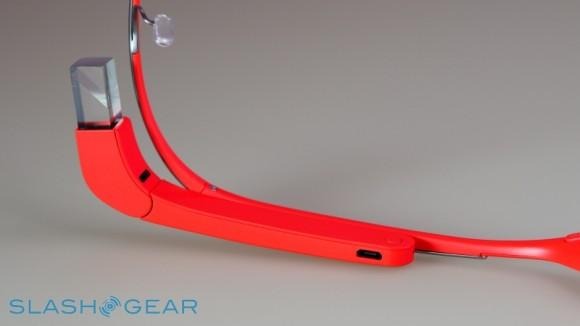Sergey Brin Talks Glass: Camera Stabilizer Incoming
Walk the floors at Google I/O and if you're lucky you'll run into Sergey Brin, who spent some time telling us about the development process behind Google Glass as well as a teaser for the update roadmap. Surrounded by fans and sporting his own Glass, Brin explained some of the decisions around the use of a monocular eyepiece, and of its placement out of the line-of-sight rather than directly in front of the wearer, as you might expect from a true augmented-reality device. However, he also revealed that a future software upgrade will address one of our own issues with Glass: keeping video steady when you're filming it from a wearable.
We've already been impressed by how Glass holds up as a wearable camera, particularly during situations – like when you're playing with your kids or demonstrating a new gadget – when you need your hands to be free. However, we also found it more than a little getting used to, keeping your head still when you're recording a conversation. All too easily you end up with nodding video, as you unconsciously move and react to the person you're talking to.
We mentioned that to Brin, and he confirmed that it's something Google is actually working on addressing. "Stay tuned, we're gonna have some software that helps you out" he told us; it's unclear how, exactly, that will be implemented, but digital image stabilization is already available on smartphones, and Google might be using a similar system. Glass also comes equipped with various sensors and gyroscopes – some of which are only partially utilized in this early iteration – and so Google could tap into those to do image-shifting and compensate for head-shake.
As you might expect for a device named the "Explorer Edition" and aimed squarely at developers, Glass is still a work-in-progress. Google aims to translate what it learns from this relatively small-scale deployment to the eventual consumer version – tipped to arrive in 2014 – including both design and functionality refinements.

We asked Brin about the style decisions Google made along the way, and at which point the aesthetics of Glass came into the process. "We did make some functional mockups," he told us, "but mostly we made functional but uglier, heavier models – style came after that."
Style is, when you're dealing with device you wear, distinct in a very particular way from design. Even if the work on physical appearance followed on after function, how Glass sits on the face did not.
Glass-chat with Sergey Brin at Google I/O 2013:
"Very early on we realized that comfort was so important, and that [led to] the decision to make them monocular," Brin explained. "We also made the decision not to have it occlude your vision, because we tried different configurations, because something you're going to be comfortable – hopefully you're comfortable wearing it all day? – is going to be hard to make. You have to make a lot of other trade-offs."
We'll have more coverage from Google I/O all week, so catch up with all the news from the epic 3.5hr keynote yesterday!
Glass Video: Controlling AR.Drone with NVIDIA Shield
